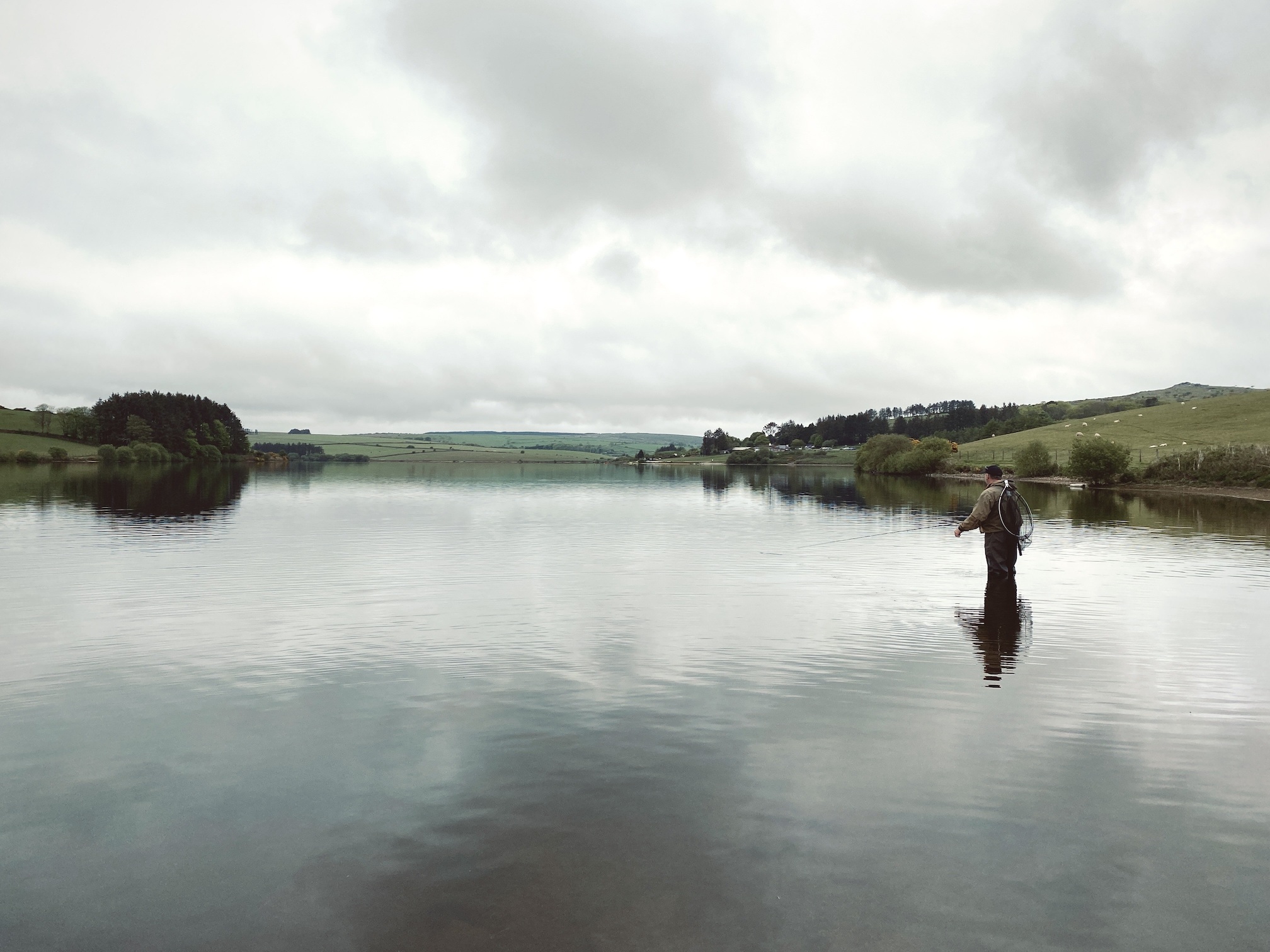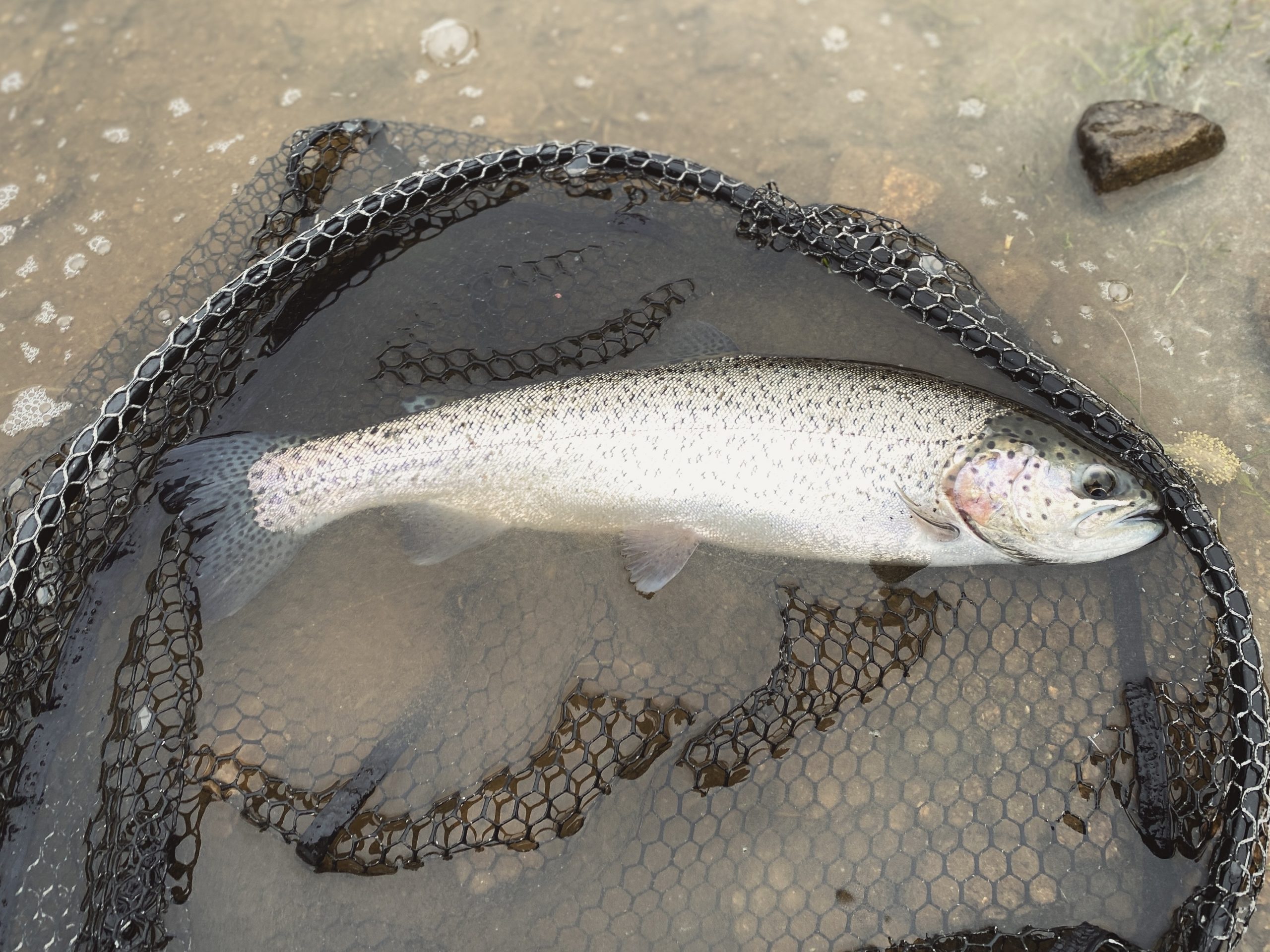South West Lakes Trust Trout Fisheries Report
May 2025
Water temperatures are continuing to slowly rise, although some chilly winds have meant that the fish are often still feeding below the surface. During warmer spells insect activity increases, and trout begin to look to the surface to feed during hatches. The Trust has run a number of successful introductory beginners’ days at the rainbow waters in conjunction with the clubs, with many newcomers managing to catch fish – Stithians hosted theirs on 4 May, with future events planned for Burrator (15 June) and Roadford (29 June). The annual Peninsula Classic bank competition will be held at Kennick on 22 June.
Fishing:
Kennick – The excellent sport continued, with anglers averaging 3.5 fish per visit. Generally the fish were well spread out around the water (particularly popular areas included the East Bank, Clampitts, The Narrows, Boat Bank and Poplar Bay), with both boat and bank anglers both enjoying similar success. Fish fed at most depths, so a variety of line types, from floating to fast sink, all caught fish, with the occasional buzzer and sedge hatch bringing fish up to feed. Hawthorns started to make an appearance toward the end of the month, with the fish starting to get a taste for them. With fish hungry to feed, a wide variety of patterns all caught fish, from deep sunk Boobies (other successful lure patterns included Orange lures, Cat’s Whisker, Tadpoles and Ace of Spades), to mid-depth nymph patterns (Damsels, Montanas, Buzzers, Diawl Bach, Hare’s Ear and Pheasant Tail nymphs), with the occasional fish rising to Hawthorns and foam Beetles. Graham Roberts caught the best fish of the month – a rainbow of 4lb; Michael Peppitt caught a rainbow of 3lb 8oz – one of six caught from the boat; Michael Herring (from Thurlstone) caught a rainbow of 3lb 3oz (also from a boat).

Siblyback – The excellent sport continued at Siblyback throughout the month, with anglers averaging 4.3 fish per rod, with the banks proving to be slightly more popular than the boats. Stocky Bay, Crylla, North Bank and Two Meadows were the most productive locations. Fish tended to be near the surface, with floating and intermediate lines combined with a slow or medium retrieve proving to be the best tactic. There were regular hatches of buzzers throughout the month, with beetles, hawthorns and caddis putting in an appearance toward the end of the month. As the trout were eager to feed, a wide variety of dry (Hawthorns, Daddies, Gnats, Beetles, Hoppers and Klinkhammers), nymph (Damsels, Hares Ear, Spiders, Buzzers), and lure patterns (Tadpoles, Orange Fritz and Cat’s Whiskers) all caught fish. Ben Lang and son, Harry Cinnamon, caught 11 rainbows to 2lb between them, mainly using a floating line, long leader, with a Damsel on the point and Diawl Bach on the dropper. Ron Wilday caught nine rainbows to 1lb 12oz, pulling Damsels and Cat’s Whiskers. The Lawson brothers (Al and Andy, from Plymouth) both had an excellent morning session, casting Black foam Hoppers and Hawthorn patterns to rising fish, and each catching a bag of rainbows averaging 1lb 12oz.


Burrator – Anglers averaged 2.8 fish per visit over the month, with most fish being caught at Longstone, Sheeps Tor, Pig Trough, Peninsular Bay, The Lawns and Lowry Point. The banks were marginally more popular than the boats, and with fish feeding generally within three feet from the surface, floating and intermediate lines proved to be the most successful (fished with a variety of retrieve speeds). As there was plenty of insect activity (buzzer and sedge hatches), fish were looking up to feed, and could be caught on dry Claret Hoppers, Brown Daddies, Tups Indispensable, Dry Adams, Black Gnats and dry Sedge patterns; sub-surface feeders were caught on various nymph patterns (especially Damsels and Montanas, Buzzers and Diawl Bachs) and lures (Cats Whisker, Tadpole, Orange Blob and Cormorant).

Stithians – Stithians fished fairly consistently throughout May, with anglers averaging 2.7 fish per visit. Most popular locations included Pipe Bay, Mossopps, Goonlaze, Pub Bay and Yellowort, with plenty of fish feeding tight into the shallows, and floating lines with a medium/slow retrieve producing the best results. Plenty of gnats and hawthorn flies on the water meant that the trout were looking up to feed, and could be caught on dry Black Gnats, Black Hoppers, Hawthorns and beetles. Deeper feeding fish took Black Buzzers, Diawl Bachs, Damsel Nymphs, Hares Ears, as well as various lure patterns (Orange Blob, Snake, Tadpole, as well as the occasional Booby).
Colliford – Anglers averaged 2.7 fish per rod, and while fish were well spread out around the reservoir, the most productive banks included Redhill Point, the Dam, Lords Waste, The Slipway, The East Bank and Pines. With plenty of fish showing, floating lines with a slow retrieve proved popular, with fish taking dry Hawthorns, Hoppers, Black Gnats, and Foam Beetles. Subsurface feeders were caught on a selection of nymphs and lure patterns (including Goldhead Bibio, Soldier Palmer, Zonker, Tadpole, Pheasant Tail, Kate McLaren and Alexandra). Kevin Rushton caught a grand brownie of 4lb 3oz (the best fish from Colliford so far this season), while Dean Boucher caught a brown of 2lb 4oz (as part of a bag of eight fish).
Fernworthy – The catch rates improved to an average of 2.9 fish per visit over May, with fish being caught at Thornworthy, Brownhills, the Boathouse and along the south bank, as well as in the deeper water by the dam. Floating lines fished with a long leader produced the best results, and when there was a buzzer hatch, fish could be caught on small beetle patterns, Hawthorns and hoppers. Deeper feeders were caught on Damsels, Buzzers, Blue Zulu, Pheasant Tail, Soldier Palmer, Connemara, Bibio, Mini Scruffy Tiger and Hares Ears.
Roadford – Floating lines with varied retrieves proved to be the order of the day, with the best sport to be had from the deeper water by the dam, The Oaks, Grinnacombe, Gaddacombe, Shop Bay and Wortha. Weekly catch rates varied, with anglers averaging 5.6 fish one week, and 3 fish per visit over the whole month. While some fish rose to dry patterns (Daddies and Black Gnats), most were caught in deeper water, taking a selection of nymphs (Damsel, Buzzer, Blue Diawl Bach and Hares Ear) and lure patterns (Blue/Gold Humungous, Cormorant, Leach, Muddler Minnow and Mini Scruffy Tiger).
Please see the Trust’s website (www.swlakestrust.org.uk/trout-fishing) for more information on buying tickets, boat availability and booking, and forthcoming events.
Chris Hall (May 2025)


